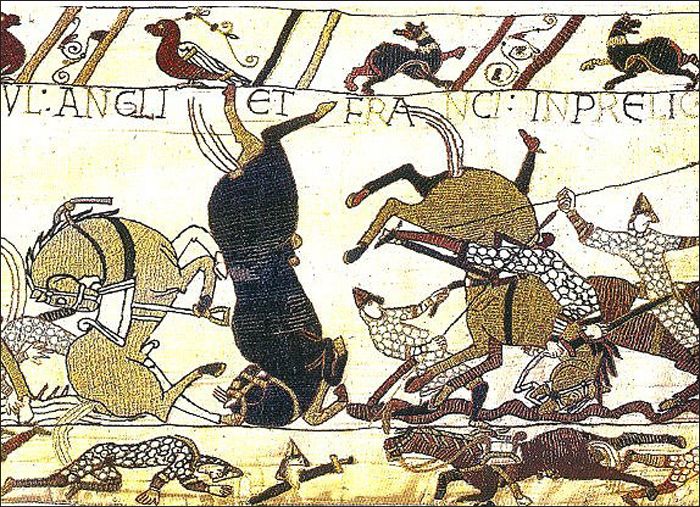A historian believes he has identified the designer of the Bayeux Tapesty, an 11th-century embroidered cloth once characterized by Bryan Talbot as "the first known British comic strip."
Embroidered on linen with colored woolen yarns, the 230-foot "tapestry" consists of about 50 scenes depicting the Norman conquest of England in 1066. Although some scholars have long theorized it was commissioned by Bishop Odo of Bayeux, half-brother of William the Conqueror, the name of the actual designer has been elusive.
But now Medievalists.net reports that in a paper published in the journal Anglo-Norman Studies, Howard B. Clarke credits Scolland, abbot of St.Augustine’s monastery in Canterbury, with the work.
According to Clarke, professor emeritus at University College Dublin, the key to solving the centuries-old mystery lies in the tapestry's 17th scene, depicting William and Harold on campaign against Brittany, crossing the River Couesnon near the abbey of Mont St. Michel. As Medievalists.net writes, "The abbey, which is located on an island just off the Norman coast, is depicted in this scene, along with an individual in the top border who is seated and pointing. Sometimes medieval artists depict themselves as miniatures, and Clarke suggests that this is also the case here. The wording on the tapestry that accompanies this image suggests that this person is saying he had watched this very scene himself."
Clarke notes that Scolland was a senior monk at Mont St. Michel in 1064, the year of the Brittany campaign, and was appointed head of St. Augustine's in 1070. He has additional supporting evidence, which you can read at Medievalists.net.

